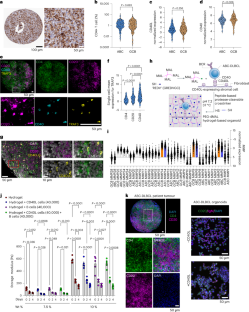2023-03-29 カリフォルニア大学サンディエゴ校(UCSD)
最新の研究では、シアノバクテリアを使用し、内部の時計がどのように環境と同期しているかをリアルタイムで研究する方法を開発し、時計の適切な機能を確保するための遺伝子発現における時間設定信号の伝達など、従来は不明だった時計の内部機能に関する新しい発見があった。
研究者たちは、循環リズム時計の核として知られる発振子から遺伝子発現に至るまで時間設定信号を中継する役割を果たす酵素であるキナーゼが、単に出力成分ではなく時計全体の一部であることを発見した。また、適切に機能するためには2つのキナーゼが必要であることも明らかになった。
<関連情報>
- https://today.ucsd.edu/story/dissecting-the-circadian-clock-in-real-time
- https://www.pnas.org/doi/10.1073/pnas.2221453120
リアルタイムで追跡される環境と概日時計の同調性 Synchronization of the circadian clock to the environment tracked in real time
Mingxu Fang,Archana G. Chavan,Andy LiWang,Susan S. Golden
Proceedings of the National Academy of Sciences Published:March 20, 2023
DOI:https://doi.org/10.1073/pnas.2221453120

Significance
Circadian clocks are found in all kingdoms of life, where they control daily rhythmic activities from gene expression to behavior. To ensure the correct timing, daily alignment of internal clocks with the 24-h rhythm of the environment, termed entrainment, is necessary. The cyanobacterial clock has served as a model to understand how biological clocks are entrained; however, little is known about how time setting signals are transmitted from the core oscillator to gene expression. We used a high-throughput method to track the entrainment of in vitro reactions in real time and showed that some components that relay the rhythm from the core oscillator to gene expression also determine whether an environmental signal will cause a shift in the phase of the clock.
Abstract
The circadian system of the cyanobacterium Synechococcus elongatus PCC 7942 relies on a three-protein nanomachine (KaiA, KaiB, and KaiC) that undergoes an oscillatory phosphorylation cycle with a period of ~24 h. This core oscillator can be reconstituted in vitro and is used to study the molecular mechanisms of circadian timekeeping and entrainment. Previous studies showed that two key metabolic changes that occur in cells during the transition into darkness, changes in the ATP/ADP ratio and redox status of the quinone pool, are cues that entrain the circadian clock. By changing the ATP/ADP ratio or adding oxidized quinone, one can shift the phase of the phosphorylation cycle of the core oscillator in vitro. However, the in vitro oscillator cannot explain gene expression patterns because the simple mixture lacks the output components that connect the clock to genes. Recently, a high-throughput in vitro system termed the in vitro clock (IVC) that contains both the core oscillator and the output components was developed. Here, we used IVC reactions and performed massively parallel experiments to study entrainment, the synchronization of the clock with the environment, in the presence of output components. Our results indicate that the IVC better explains the in vivo clock-resetting phenotypes of wild-type and mutant strains and that the output components are deeply engaged with the core oscillator, affecting the way input signals entrain the core pacemaker. These findings blur the line between input and output pathways and support our previous demonstration that key output components are fundamental parts of the clock.


